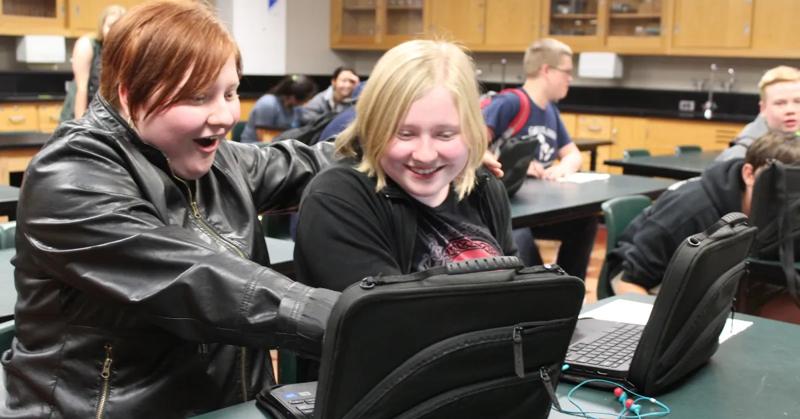Differentiated instruction (DI) begins with an accurate understanding of what DI is—and is not. You may be surprised how easy it is to incorporate into your classrooms. And no, DI is not a separate lesson plan for each student.
1. Differentiated instruction is NOT “individualized instruction.”
Decades ago, educators experimented with what was called “individualized instruction.” The idea was to create a different, customized lesson each day for each of the 30-plus students in a single classroom. Given the expectation that each student needed to have a different reading assignment, for example, it didn’t take long for teachers to become exhausted.
Differentiation is more reminiscent of a one-room-schoolhouse than of individualization. That model of instruction recognized that the teacher needed to work sometimes with the whole class, sometimes with small groups, and sometimes with individuals. These variations were important both to move each student along in his or her particular understandings and skills and to build a sense of community in the group.
2. Differentiated instruction is NOT chaotic.
A benchmark of teacher development is the point at which the teacher becomes secure and comfortable with managing classroom routines. Fear of returning to uncertainty about “control of student behavior” is a major obstacle for many teachers in establishing a flexible classroom. Here’s a surprise, though: teachers who differentiate instruction are quick to point out that, if anything, they now exert more leadership in their classrooms, not less. And, student behavior is considerably more focused and productive.
Compared with teachers who offer a single approach to learning, teachers who differentiate instruction have to be more active leaders. Effectively differentiated classrooms include purposeful student movement and sometimes purposeful student talking, but they are not disorderly or undisciplined. On the contrary, “orderly flexibility” is a defining feature of differentiated classrooms—and of any classroom that prioritizes student thinking.
3. Differentiated instruction is NOT just another way to provide homogeneous grouping.
Our memories of undifferentiated classrooms probably include the bluebird, cardinal, and buzzard reading groups. Typically, a buzzard remained a buzzard, and a cardinal was forever a cardinal. Under this system, buzzards nearly always worked with buzzards on skills-focused tasks, while work done by cardinals was typically at “higher levels” of thought.
A hallmark of an effective differentiated classroom, by contrast, is the use of flexible grouping, which accommodates students who are strong in some areas and weaker in others. In a differentiated classroom, the goal is to have students work consistently with a wide variety of peers and with tasks thoughtfully designed not only to draw on the strengths of all members of a group but also to shore up those students’ areas of need.
4. Differentiated instruction is NOT just “tailoring the same suit of clothes.”
Many teachers think they are differentiating instruction when they let students volunteer to answer questions, grade some students a little harder or easier on an assignment in response to the students’ perceived ability and effort, or let students read or do homework if they finish a class assignment early. While such approaches play a role in addressing learner variance, they are examples of “micro-differentiation” or “tailoring,” and are often just not enough to adequately address significant learning issues.
If the basic assignment itself is far too easy for an advanced learner, having a chance to answer an additional complex question is not an adequate challenge. If information is essential for a struggling learner, allowing him to skip a test question because he never understood the information does nothing to address the student’s learning gap.
Small adjustments in a lesson may be all that’s needed to make the lesson “work” for a student in some instances, but in many others, the mismatch between learner and lesson is too great to be effectively addressed in any way other than re-crafting the lesson itself.
5. Differentiated instruction is NOT just for outliers.
Certainly students who have identified learning challenges are likely to need scaffolding on a fairly regular basis in order to grow academically as they should. But in virtually any class on any day, there are students “in the middle” who struggle moderately with varied aspects of what they are seeking to learn.
There are students who know a good bit about a portion of a lesson or unit but struggle with specific steps or content. There are students whose experiences outside the classroom weigh negatively on their ability to concentrate or complete work. Every student benefits from being on the teacher’s radar and from seeing evidence that the teacher understands their development and plans with their success in mind.
Source: Adapted from How to Differentiate Instruction in Academically Diverse Classrooms, 3rd Edition, by Carol Ann Tomlinson, Alexandria, VA: ASCD. ©2017 by ASCD. All rights reserved.







